MAKE YOUR MARK
Print / Play / Cards
ROLE: Designer & Creative Direction
COMPLETED: Fall 2020
PRINTED ON: 6.5” x 10” x .125” Acrylic sheets on laser cutter
SPEACIAL THANKS: Audra Hubbell
COMPLETED: Fall 2020
PRINTED ON: 6.5” x 10” x .125” Acrylic sheets on laser cutter
SPEACIAL THANKS: Audra Hubbell
BRIEF
A cohesive set of cards based on Ray and Charles Eames’ House of Cards that encourages discovery and play through interaction.
SOLUTION
I designed a toolkit of 9 stencils for children that will assist them in becoming change makers by learning and engaging with the vocabulary surrounding social issues. They can create signs, messages, etc. about issues they care about and begin a dialogue with those around them. With the rise of young activists, my intention was to make kids feel comfortable and confident in making their voices heard. They can use the set to make a poster, a protest sign, chalk on sidewalk and other works. The laser cut, reusable and durable acrylic stencils allow kids to add their own personality and flair to each piece they create and begin making the world a better place.
![]()
A cohesive set of cards based on Ray and Charles Eames’ House of Cards that encourages discovery and play through interaction.
SOLUTION
I designed a toolkit of 9 stencils for children that will assist them in becoming change makers by learning and engaging with the vocabulary surrounding social issues. They can create signs, messages, etc. about issues they care about and begin a dialogue with those around them. With the rise of young activists, my intention was to make kids feel comfortable and confident in making their voices heard. They can use the set to make a poster, a protest sign, chalk on sidewalk and other works. The laser cut, reusable and durable acrylic stencils allow kids to add their own personality and flair to each piece they create and begin making the world a better place.
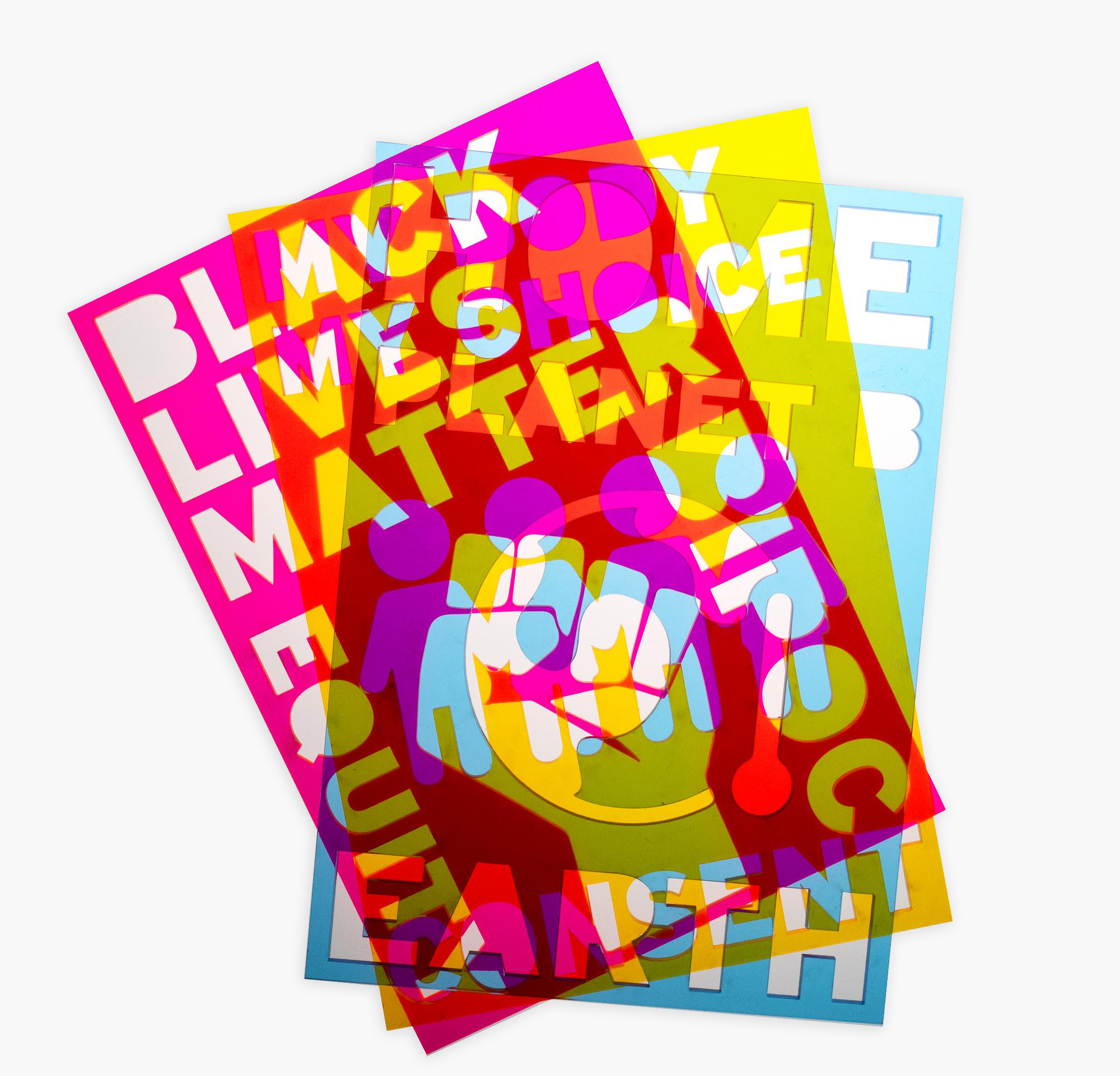
Some quotations that guided my research and design:
“Toys are not as serious as they look. Toys and games are the prelude to serious ideas.”
—Charles and Ray Eames
"Children's lives are very programmed, very scheduled, there aren't a lot of opportunities for young people to say 'what do I want to do now?' or ask 'I'm sitting next to this thing, what shall I do with it?’”.
“A lot of the options that we give to children don't allow for freedom, we don't give them the freedom to play,"
— Cas Holman
“Toys are not as serious as they look. Toys and games are the prelude to serious ideas.”
—Charles and Ray Eames
"Children's lives are very programmed, very scheduled, there aren't a lot of opportunities for young people to say 'what do I want to do now?' or ask 'I'm sitting next to this thing, what shall I do with it?’”.
“A lot of the options that we give to children don't allow for freedom, we don't give them the freedom to play,"
— Cas Holman

The set contains stencils on the following 9 topics: Disability Rights, environmental rights, gun safety, healthcare, ingenious rights, LGBTQIA+ rights, racial justice, reproductive rights and voting rights.


Making the cards interactive was very important to me. The cards give children the opportunity to play while also becoming civically engaged.

PROCESS
When staring this project, I kept coming back to pictures like these that I took at the women’s march. We have seen a spike in young activists and children wanting to be involved in issues greater than themselves. As a child, I was always afraid of saying the wrong thing. I was not exposed to dialogue and verbiage that allowed me to actively participate in conversations around social issues.
When staring this project, I kept coming back to pictures like these that I took at the women’s march. We have seen a spike in young activists and children wanting to be involved in issues greater than themselves. As a child, I was always afraid of saying the wrong thing. I was not exposed to dialogue and verbiage that allowed me to actively participate in conversations around social issues.
I have always been inspired by the MoMA’s “I went to the MoMa and...” project and its ability to engage participants. I knew I wanted the children to be able to add their touch, but provide grounding in topics they may be interested in.
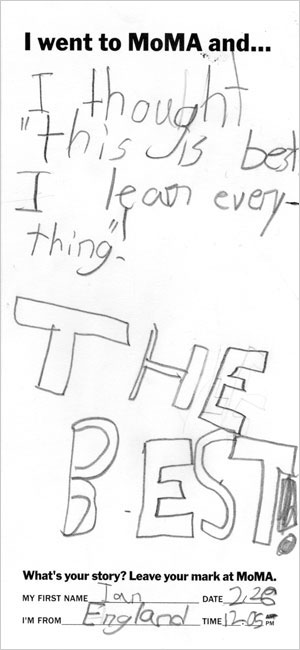
I went out and started researching games and tools for kids that allowed them to add their creativity and voice. I was immediately drawn to stencils. Stencils are often times used in the politcal sphere to create quick posters and signs with spray paint or other means. I also started taking note of packaging messaging on products targeted at children.
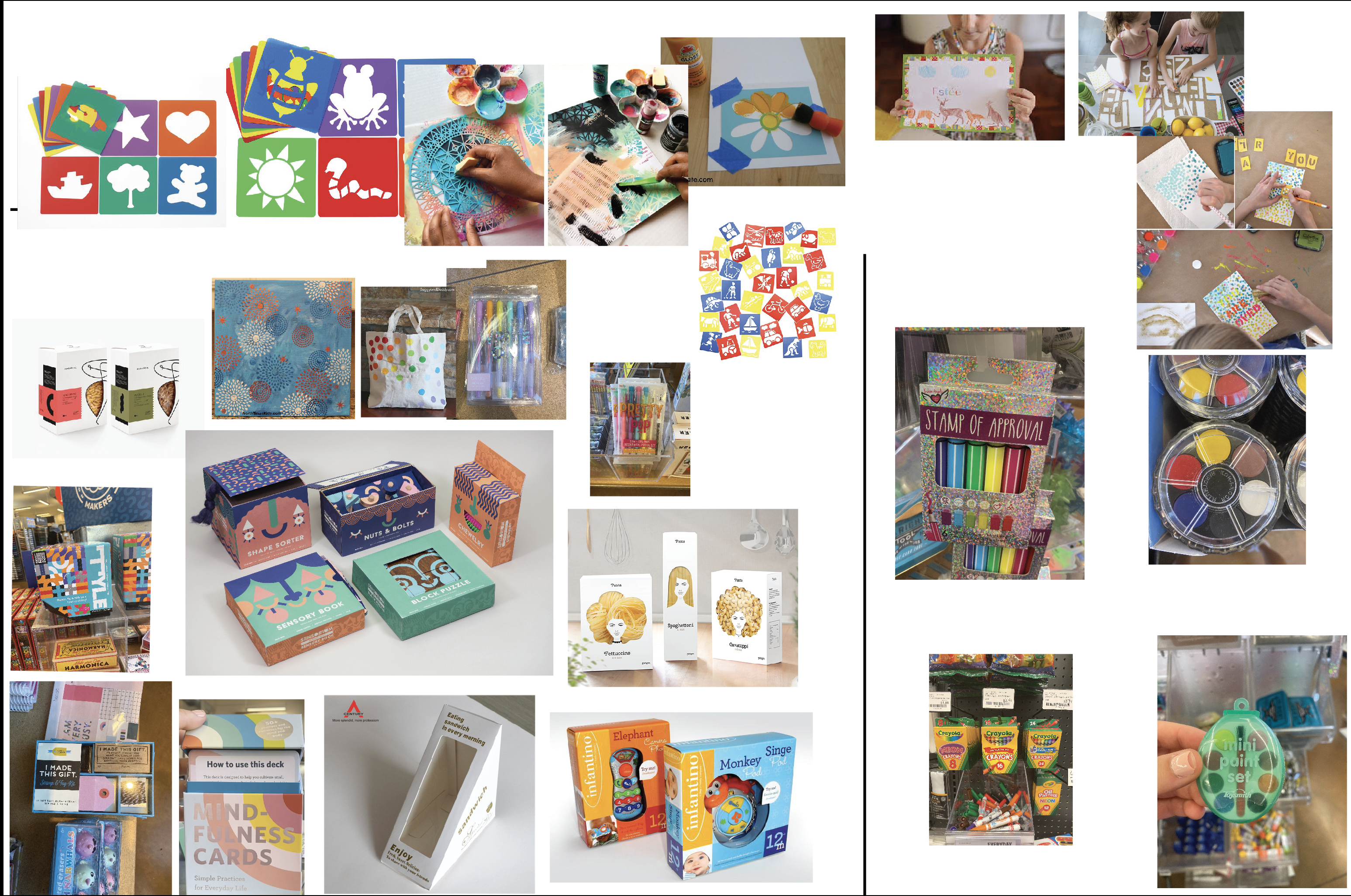
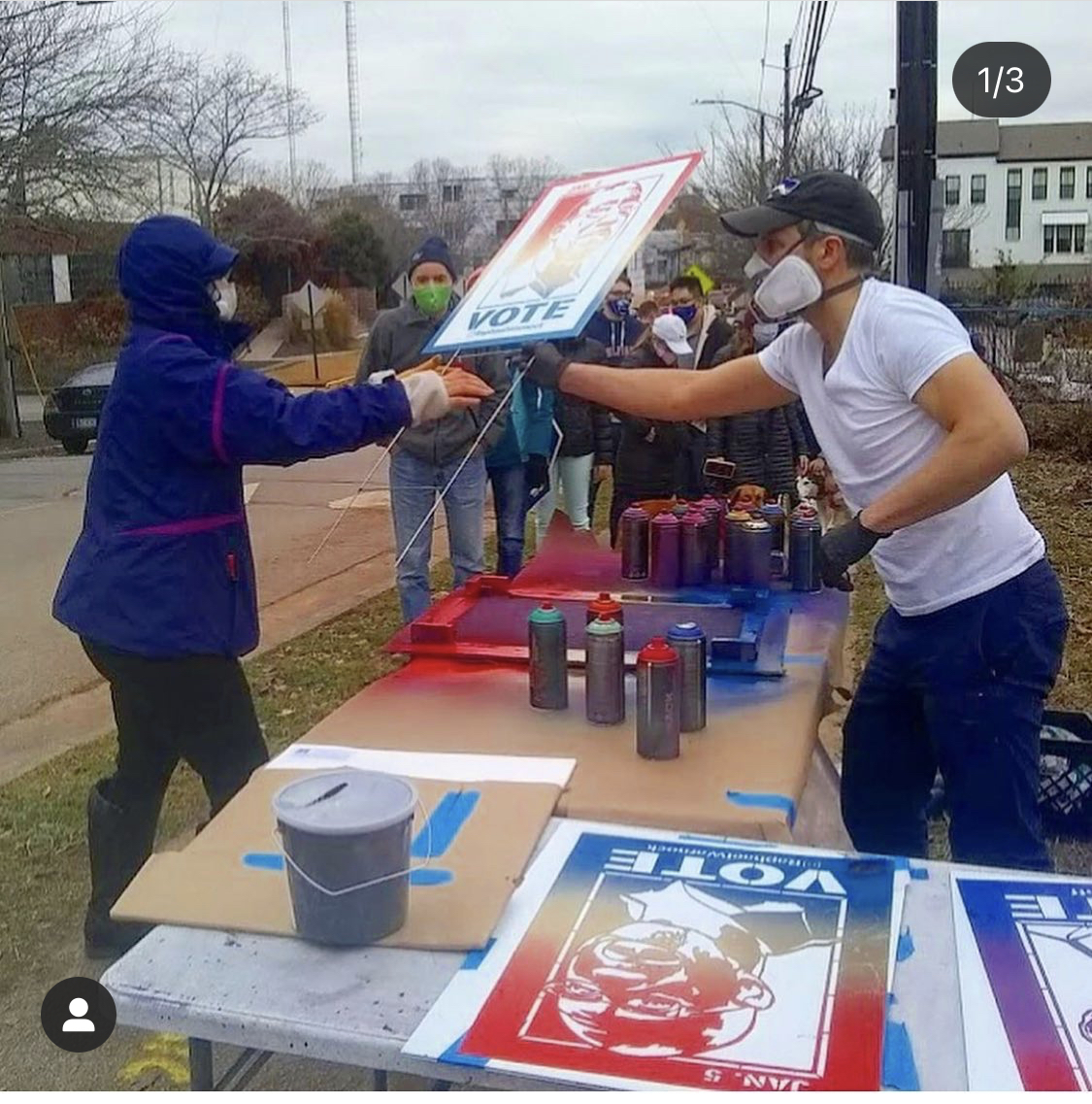
Initial thoughts about the product included age ranges, vocabulary, if I should including promoting questions, how symbols acquire meanings, utilitarian vs aesthetic vs informational design, etc.
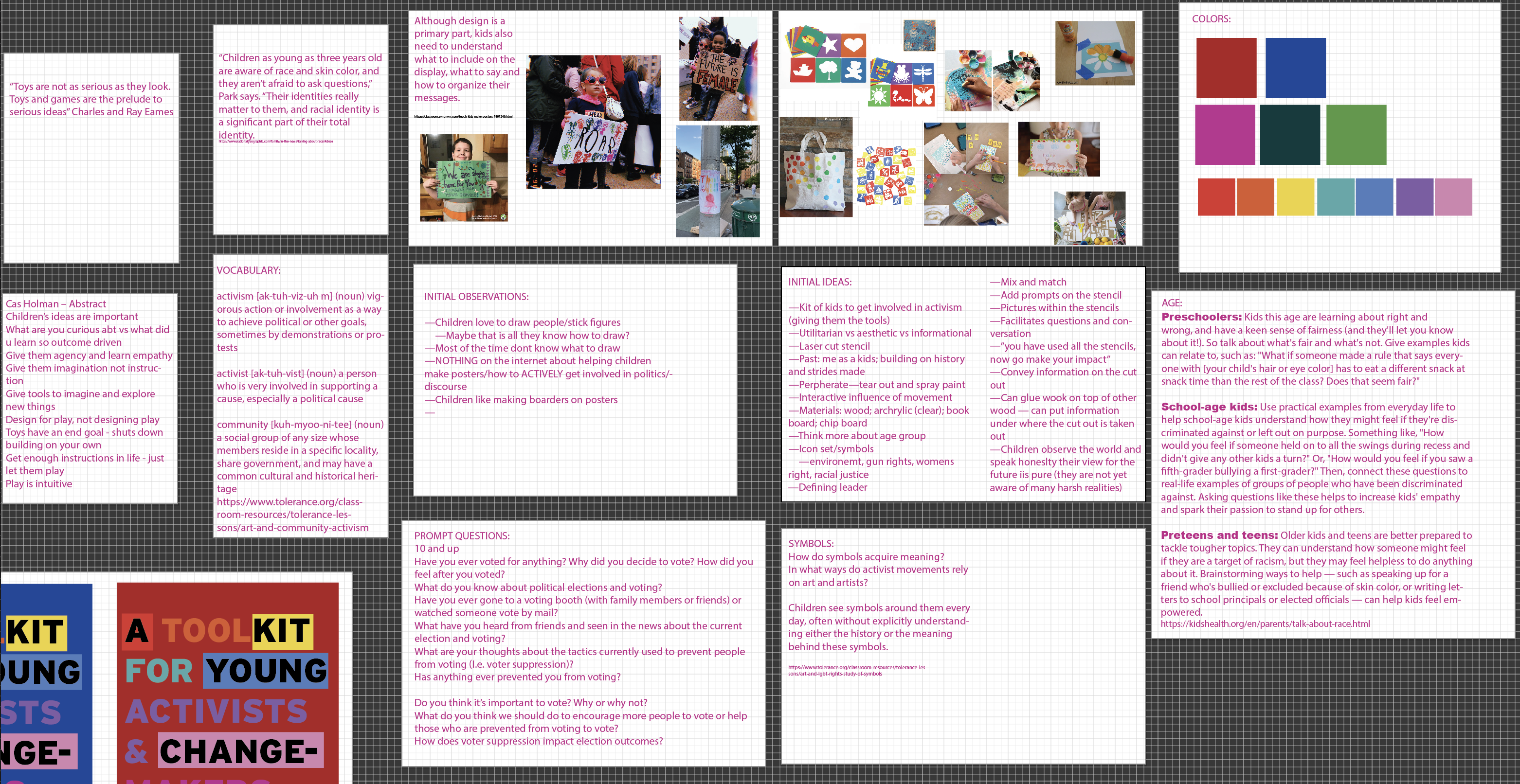
I then started thinking about the product and what I wanted to include on the stencils—images, iconography, text— and the placement of it all.
I was playing with having an image in the whole card and the stencils cut out from that. Or the images in the parts that were cut out. Additionally, thinking it could be a thick card so the punched out parts could double as blocks. Another decision I made was to make each card about a different topic instead of mix them up in order to seek clarity.
I was playing with having an image in the whole card and the stencils cut out from that. Or the images in the parts that were cut out. Additionally, thinking it could be a thick card so the punched out parts could double as blocks. Another decision I made was to make each card about a different topic instead of mix them up in order to seek clarity.
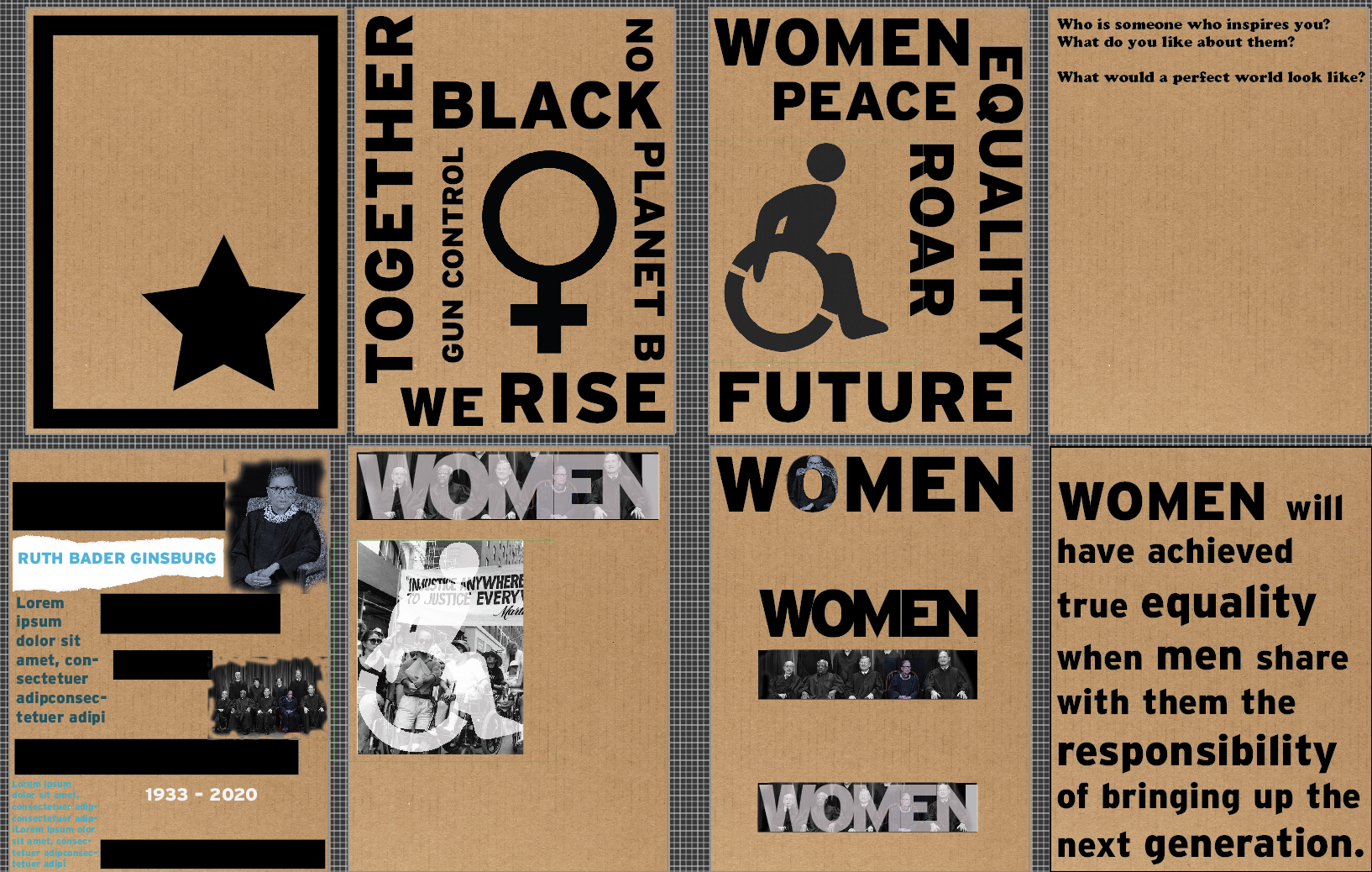
TYPOGRAPHY
I decided to go with Interstate as it is a clean and clear san serif. I debated if I should use a “stencil” typeface, but decided not having the letters cut up allowed for more individuality in the letters.
I decided to go with Interstate as it is a clean and clear san serif. I debated if I should use a “stencil” typeface, but decided not having the letters cut up allowed for more individuality in the letters.
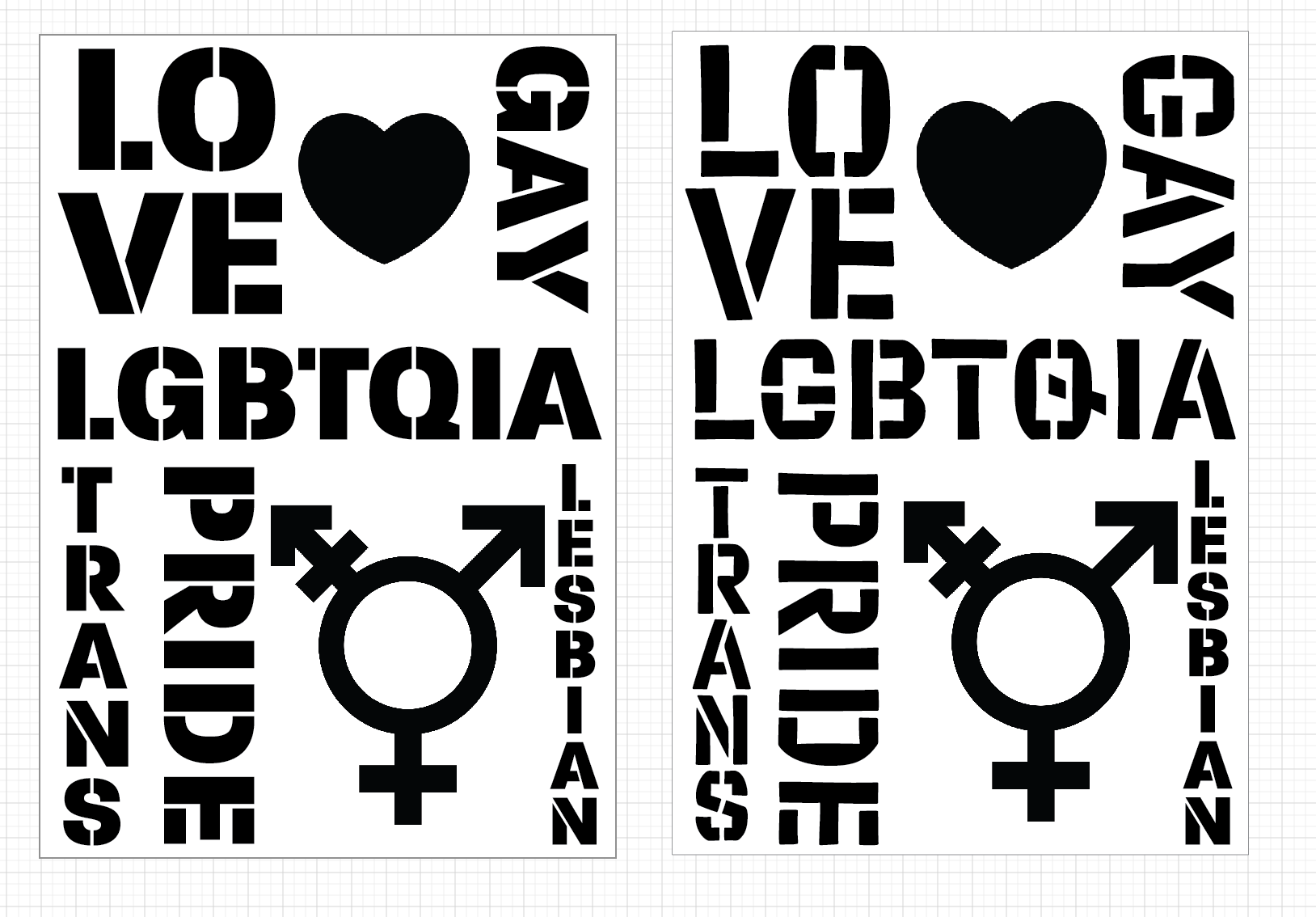
After cutting out the stencils on a sheet of paper, I made my first prototype of the stencils on cardboard.


After testing out the prototype and giving it to friends and family, I made adjustments to the size of the text and number of contents on each card.

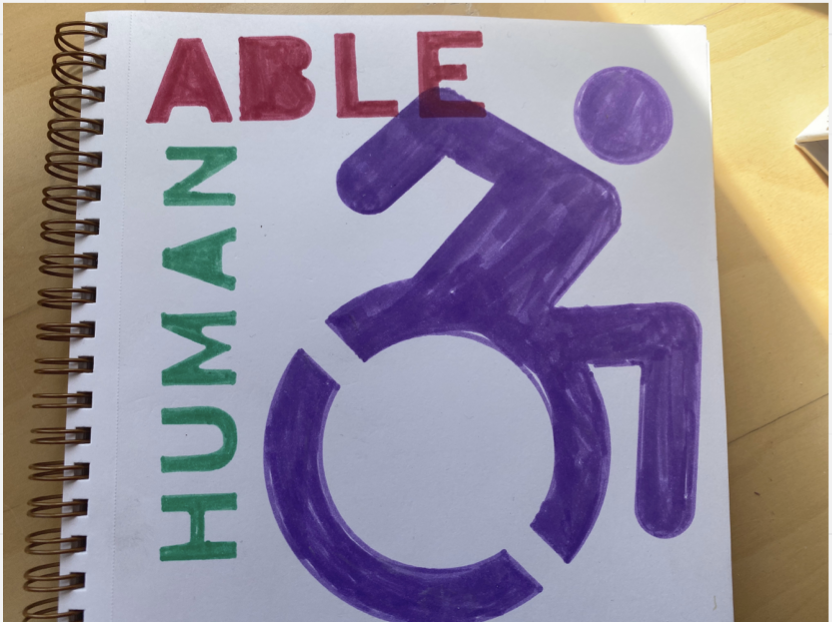
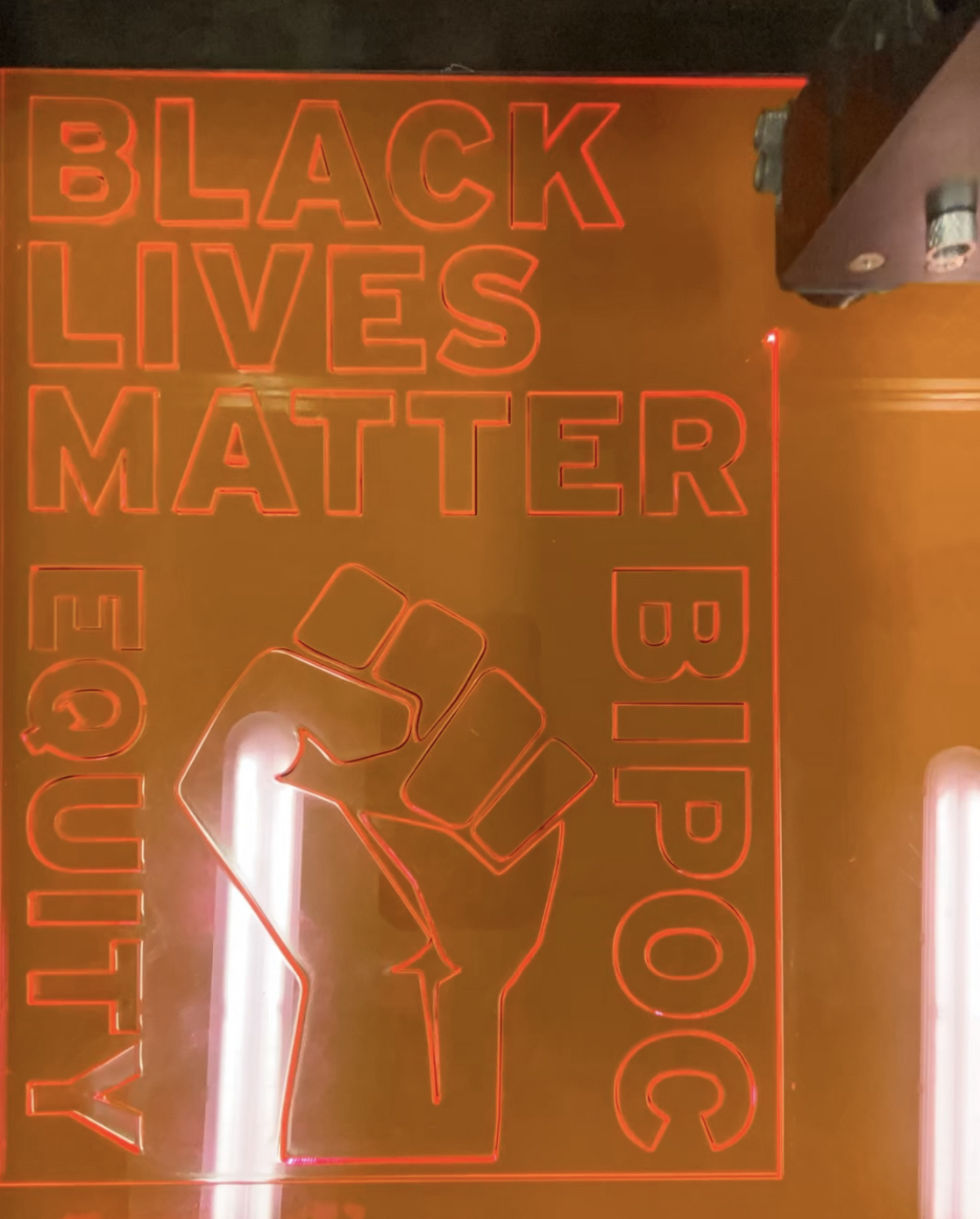
Next, I worked on messaging. The product is intended for children 5+, but to be used with a guardian around. I wanted the words to be fun, inviting, and engaging.
I conducted 5 interviews with parents and 3 interviews with children (ages 5, 8 and 12) to workshop the words. At this stage, I had a pamphlet instead of a bottom wrap for the box.
The back of the sleeve is also another interactive element that the kids using it can cross off the topics they have learned about/interacted with.
I refrained from adding too many instructions because, as Cas Holeman says, children are always being told what they can and cannot do, sometimes toys should leave something for their imagination.
The cost at the moment in the US is $19.73, which is a subtle nod to Roe vs. Wade and the price is in the UK is £19.54, which refers to Brown vs. Board of Education.
I conducted 5 interviews with parents and 3 interviews with children (ages 5, 8 and 12) to workshop the words. At this stage, I had a pamphlet instead of a bottom wrap for the box.
The back of the sleeve is also another interactive element that the kids using it can cross off the topics they have learned about/interacted with.
I refrained from adding too many instructions because, as Cas Holeman says, children are always being told what they can and cannot do, sometimes toys should leave something for their imagination.
The cost at the moment in the US is $19.73, which is a subtle nod to Roe vs. Wade and the price is in the UK is £19.54, which refers to Brown vs. Board of Education.
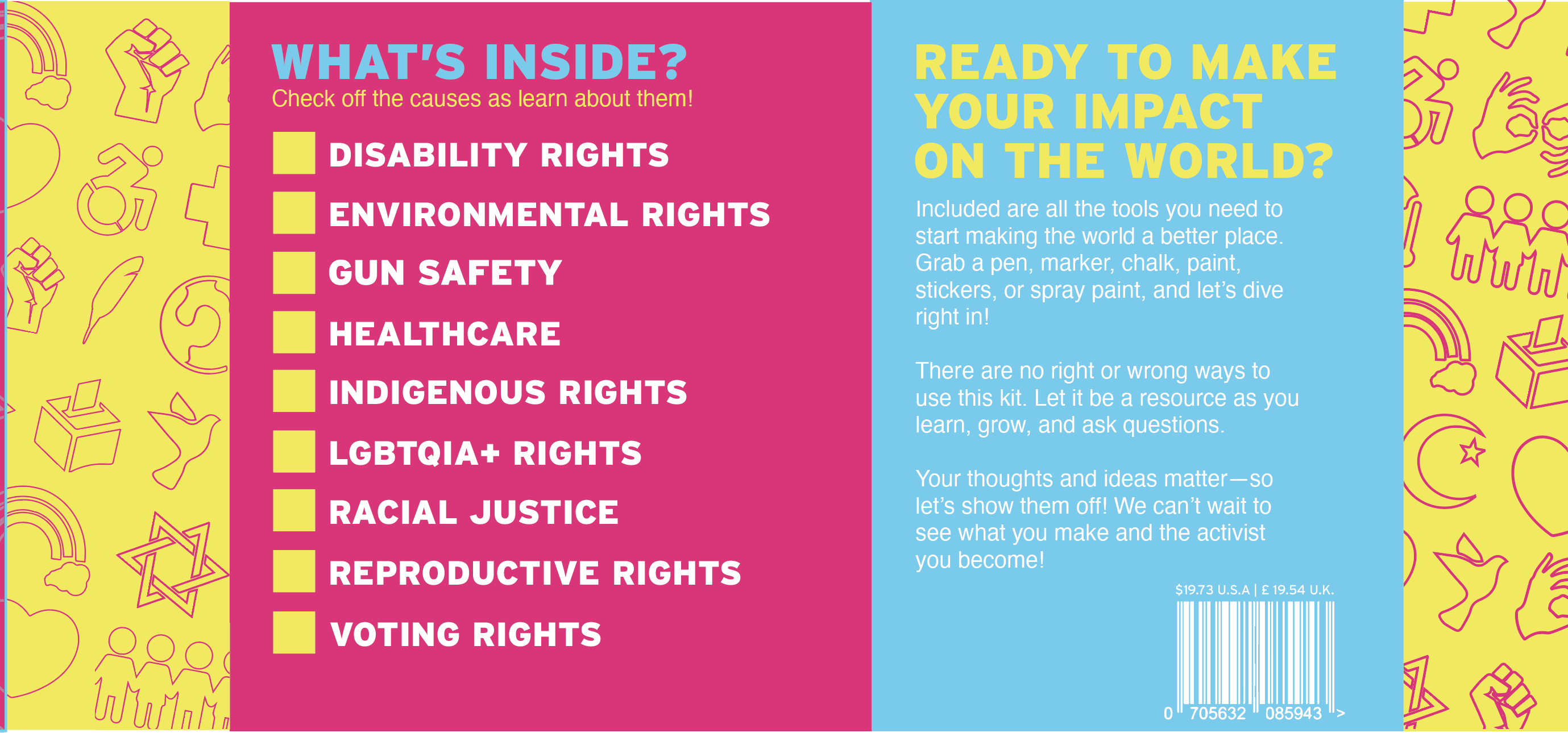
I chose to make the cards out of acrylic because it is durable and could withstand all types of materials that were used on it.
The clear box would allow for the customer to be drawn in by the colors and get a glimpse of the product inside.
COLOR
From the start, I knew I wanted to use primary colors, but had to narrow it down and decided on pink, blue, and yellow. Paying attention to the fact that when the stencils are overlaid, other colors would appear.
The clear box would allow for the customer to be drawn in by the colors and get a glimpse of the product inside.
COLOR
From the start, I knew I wanted to use primary colors, but had to narrow it down and decided on pink, blue, and yellow. Paying attention to the fact that when the stencils are overlaid, other colors would appear.
NEXT STEPS
My next step is to get this prototype into childrens’ hands and see what they do with it and iterate on the product. Afterwords, I am looking to partner with non-profits, like Sunrise STL and MOPAG (Missouri Progressive Action Group), to get the product out. Afterward, I hope to roll it out in retail stores. Make You Mark is marketed towards parents. It would be marketed on social media platforms and have paid content through a young celebrity parent.
My next step is to get this prototype into childrens’ hands and see what they do with it and iterate on the product. Afterwords, I am looking to partner with non-profits, like Sunrise STL and MOPAG (Missouri Progressive Action Group), to get the product out. Afterward, I hope to roll it out in retail stores. Make You Mark is marketed towards parents. It would be marketed on social media platforms and have paid content through a young celebrity parent.